Photography Basics – Focal length
Lenses, both those available separately for DSLR cameras, and those built into compact and bridge cameras, come in a wide variety of focal lengths. This article discusses the different focal lengths, what they are suitable for, and the different trade-offs.
Crop factor and 35mm equivalent focal lengths
In the world of digital cameras, the digital sensor size varies between camera models. This effects the field of view for a given focal length. So while a 24mm lens on a full frame 35mm camera gives a relatively wide field of view (wide angle), on a compact camera it would give a very narrow field of view (telephoto). You can see how the different sensor sizes affect the field of view in the image below:
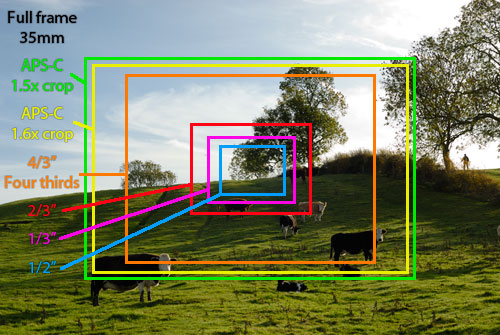
Image showing relative field of view for a given focal length when used with different size image sensors
Full frame sensors are used in high end DSLRs like the Canon 5D and Nikon D700. Nikon, Pentax, and Sony use 1.5x crop APS-C sized sensors in the majority of their consumer DSLRs and the Sony NEX series cameras. Four thirds sized sensors are used by Olympus and Panasonic, and give a 2x crop factor compared to a Full frame 35mm camera. Then we have compact and bridge cameras, which use a large variety of much smaller sensor sizes (more different sizes than what is just pictured above).
Because of the differences in field of view that occur for a given focal length when used with the different sensor sized cameras, lenses are often described in terms of their 35mm equivalent focal length. So, for example, a 12mm lens for a four thirds camera, (which has a 2x crop factor compared to a full frame 35mm camera), may be described as having an equivalent focal length of 24mm. This is because it gives the same field of view on a four thirds camera that a 24mm lens would when used on a full frame camera.
Likewise, compact cameras will usually have the focal length of their lens described in 35mm equivalent terms. For example, the Nikon Coolpix P300 camera has a 1/2.6" sensor (approx 5.6x crop factor compared to a full frame camera) and a 4.3mm - 17.9mm zoom lens. The lens however, is normally described as a 24-100mm equivalent lens, since it gives the same field of view as a 24-100mm lens would on a full frame 35mm camera.
By using the 35mm equivalent focal length of a lens, this makes it much easier to discern what sort of field of view a lens will give.
The effect of focal length on depth of field and perspective
To show the effects of focal length and subject distance on field of view, depth of field, and perspective, a subject was photographed from a fixed position, first with a medium telephoto lens (160mm equivalent focal length), and then with a wide angle lens (29mm equivalent focal length). You can see that the wide angle lens gives a much larger field of view and greater depth of field when both lenses are used to take a photo from the same position:
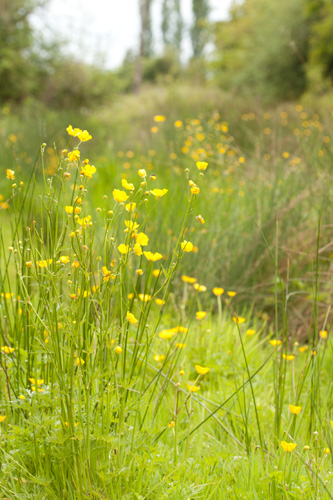
Photo taken at 160mm equivalent focal length
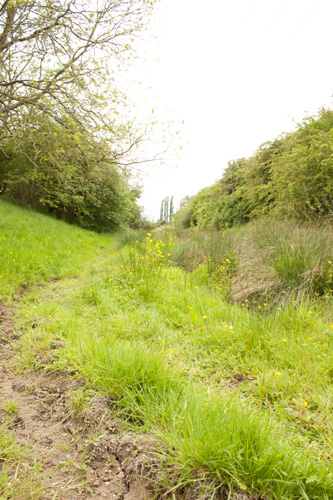
Photo taken at 29mm equivalent focal length
By cropping the photo taken at the equivalent focal length of 29mm, we can see that the perspective is the same as the photo taken at 160mm equivalent focal length, but the depth of field is much greater.
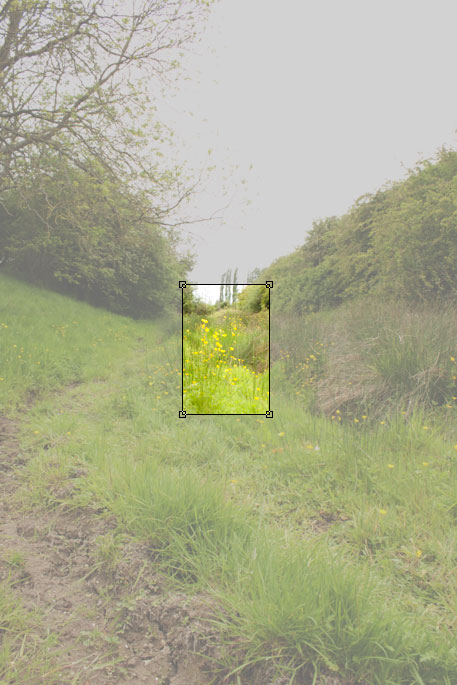
Image showing cropped area of photo taken at 29mm equivalent focal length
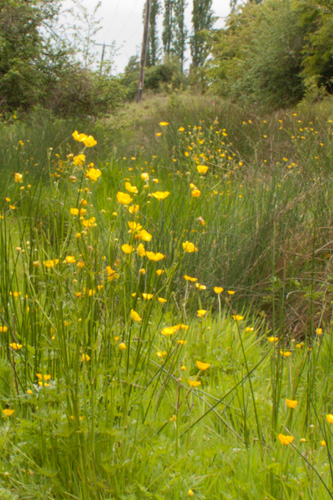
Cropped area of photo taken at 29mm equivalent focal length with -1EV exposure compensation applied
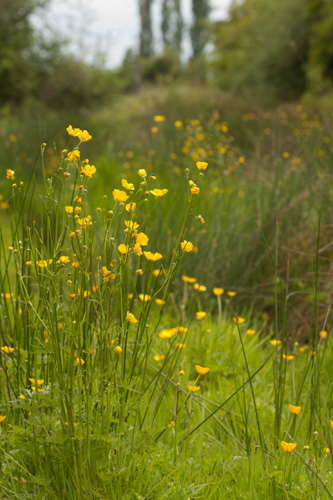
Photo taken at 160mm equivalent focal length with -1EV exposure compensation applied
The below photo was taken at the equivalent focal length of 29mm again, but the camera was moved much nearer to the buttercup plant, so the plant appears approximately the same size as it was in the 160mm equivalent focal length photo. This photo has a similar depth of field to the photo taken at an equivalent focal length of 160mm, but a vastly different perspective.
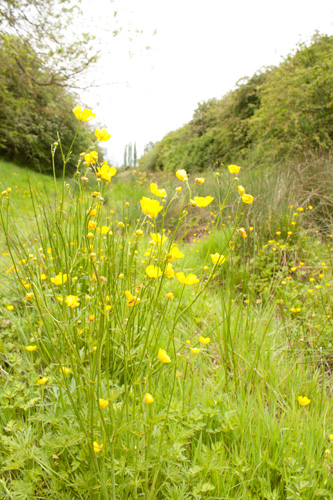
Photo taken at 29mm equivalent focal length in a position close to the plant
This is why longer focal length lenses are often said to 'compress perspective'. This is not a function of the lens or focal length itself, but rather the fact that for a given subject size, the longer focal length lets you stand much further away from your subject. It is this distance from the subject that creates the compressed perspective look.
It is also said that wide angle lenses give a greater depth of field. Again, as can be seen by the images above, while this is not entirely true, it makes sense for most intents and purposes. If you use a telephoto lens, you will likely be using it to magnify your subject, while a wide angle lens is more likely to be used to photograph a wider scene. In this situation the wide angle lens will give a larger depth of field. In cases where both lenses are used to photograph a subject at the same magnification, depth of field will be very similar.
The different focal lengths available
While just about any focal length lens can be used for any type of photography, certain focal lengths suit themselves more to particular types of photography. For example, you could photograph a close-up of a Rhino charging towards you with a wide angle lens, but you need to be standing right in front of the Rhino. Much more sensible would be a telephoto lens allowing you to keep your distance but still get a good close-up shot.
Please note the focal length ranges listed below are purely arbitrary - in reality there is a lot of overlap between what a certain focal length lens is suitable for.
Wide angle lenses - 12mm to 30mm equivalent focal length
Wide angle lenses are commonly used for landscape photography. They allow you to capture wide vistas, including the foreground near your feet, giving a good sense of depth.
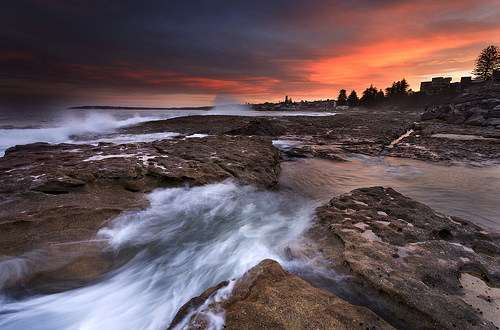
Remarkable by Gemma Stiles on flickr - taken at 17mm focal length (licensed CC-BY)
Wide angle lenses also work very well for emphasizing perspective and city shooting where there is not much room to move back from a subject.
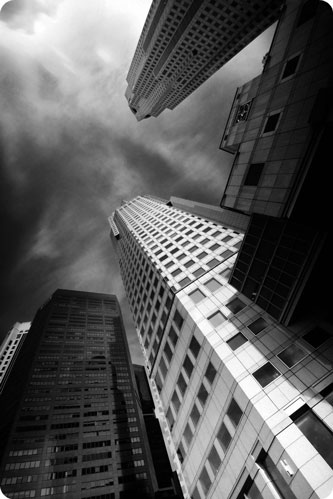
A walk among giants. by digitalpimp. on flickr on flickr - taken at 15mm equivalent focal length (licensed CC-BY)
Generally wide angle lenses don't create very flattering portraits. However, they can be used for fun and different portraits.

Another day by bearroast on flickr - taken at 16mm equivalent focal length (licensed CC-BY)
A lens in the 24mm-30mm range can be useful for photographing groups of people.
Medium or normal lenses - 35mm to 50mm equivalent focal length
These lenses work well as a general purpose lens. They are wide enough to get most subjects in the frame except in very tight situations. And they don't exaggerate perspective as much as wide angle lenses, or require to get as close to your subject.
The most popular 'specialist' use for a 35mm lens is probably street photography.
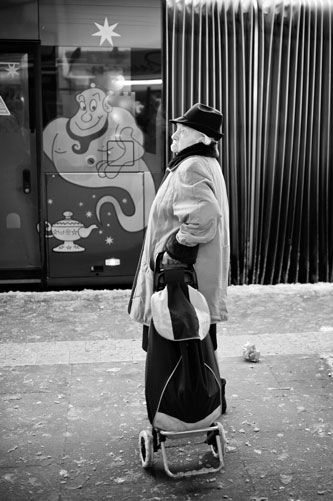
instruction-12 by Henning Welslau on flickr - taken at 35mm focal length (licensed CC-BY-ND)
Other uses for this focal range include landscape photography, portrait photography, and city photography.
Portrait or medium telephoto lenses - 50mm to 150mm equivalent focal length
Lenses in the 50mm to 135mm range are usually known as medium telephoto lenses, or portrait lenses. As you could probably guess, they are mainly used for portraits.
Lenses in this range usually have large maximum apertures (f/1.2 - f/2). The shallow depth field from using a large aperture combined with the perspective compression that results when these lenses are used at normal distances works well for portraits.
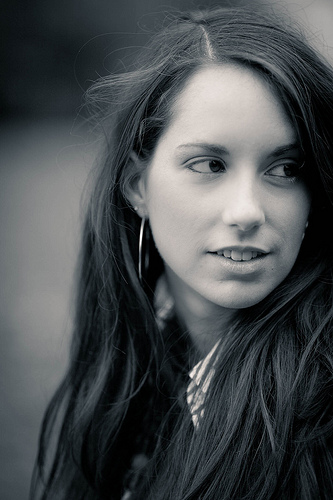
Alice by Dino Quinzani on flickr - taken at 135mm focal length (licensed CC-BY-SA)
Many macro lenses are also included in this focal length range. Macro lenses focus much closer than standard lenses, allowing you to capture small subjects such as insects and flowers.
The longer focal length macro lenses are more suitable for capturing small creatures as the longer working distance means you are less likely to scare them off. Some photographers also prefer longer focal length macro lenses (e.g. 150mm) for perspective compression when photographing flowers.

Nagoya, Japan, 03/24/2011 by ka_tate on flickr - taken at 120mm equivalent focal length (licensed CC-BY)
Telephoto lenses - 150mm to 350mm equivalent focal length
Telephoto lenses work well for when you have some distance between yourself and your subject, such as for sports where you can get reasonably close to the action.
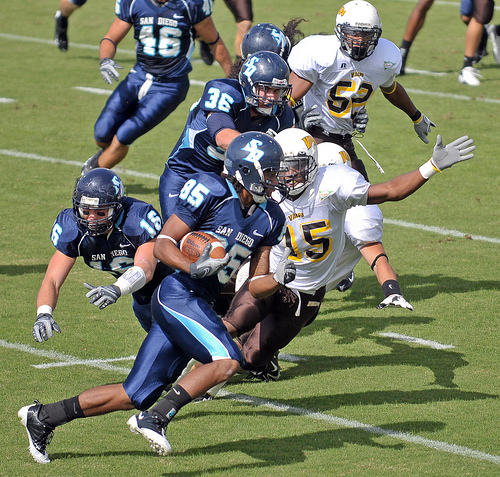
Taylor Wright by SD Dirk on flickr - taken at 350mm equivalent focal length (licensed CC-BY)
Captive wildlife, or wildlife that is used to humans will usually let you get close, but not really close. For this sort of wildlife photography a telephoto zoom lens works well.

seen better days by nosha on flickr - taken at 350mm equivalent focal length (licensed CC-BY-SA)
Telephoto lenses can also work well for distant landscapes.
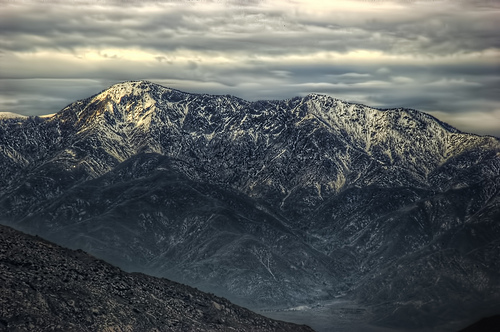
No noise mountain by Neil Armstrong2 on flickr - taken at 350mm equivalent focal length (licensed CC-BY-ND)
They also work well for photographing planes at air shows.
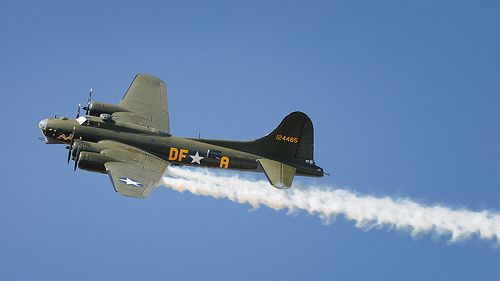
The Return of Sally B by Andrew Stawarz on flickr - taken at 350mm equivalent focal length (licensed CC-BY-ND)
Telephoto lenses are reasonably large compared to lenses with lesser focal lengths. Depending on the model and the maximum aperture of the lens, telephoto lenses can be quite expensive as well.
Super telephotos - 400mm and up equivalent focal length
The 35mm versions of these lenses are large, heavy, and expensive. But they can let you get close-up shots without you having to get close to your subject.
If you have a four thirds camera you can achieve these focal lengths at a more reasonable cost and weight, and you can also purchase bridge cameras with lenses that go into the 35mm equivalent super telephoto range. This does come at a cost though, four thirds and bridge cameras are noisier at high ISOs. Another potential problem (though it could be seen as a benefit) is that they will have more depth of field than a full frame camera for a given full frame equivalent focal length.
Wildlife, particularly birds is a subject super telephoto lenses are often used for.
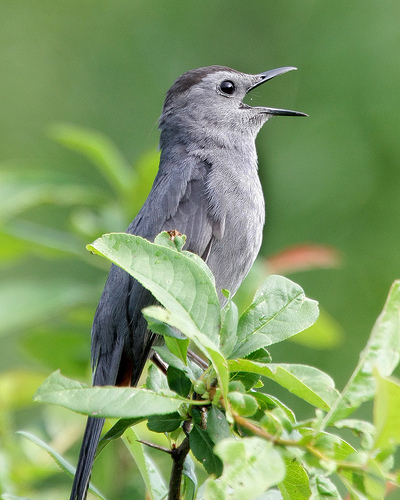
Another catbird by ibm4381 on flickr - taken at 1040mm equivalent focal length (licensed CC-BY)
Sports, especially when you can't get too close to the action, or you want to capture close-ups, are another place where super telephotos do what other lenses can't.
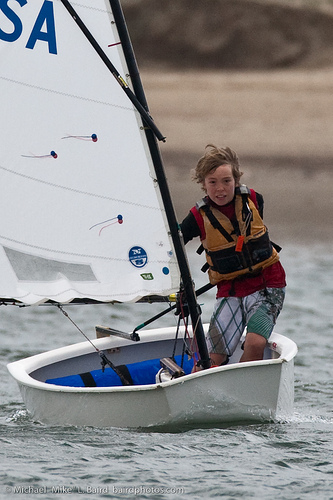
Energetic skilled young boy, this youngster from Morro Bay Yacht Club Junior Lifeguard Sailboat Race in Morro Bay, CA., demonstrates sailing skills as he negotiates a turn coming about. by mikebaird on flickr - taken at 780mm equivalent focal length (licensed CC-BY)
You can also purchase Mirror lenses, which provide long focal lengths, in a relatively small and lightweight lens. However, mirror lenses tend to have small maximum apertures, have a peculiar donut bokeh, and are manual focus only. They aren't renowned for their optical quality either, but they are much cheaper than standard lenses of equivalent focal lengths.
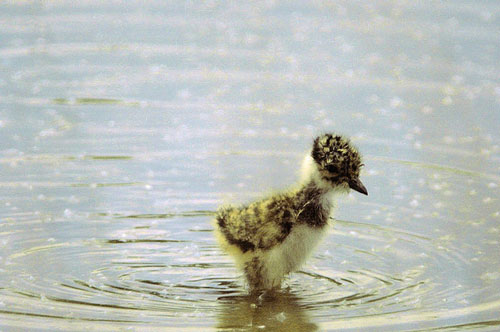
fluffy little thing II by kloniwotski on flickr - taken at 750mm equivalent focal length with a mirror lens (licensed CC-BY)
Prime vs. zooms
Prime lenses are those that only have a single focal length (e.g. 50mm), while zooms are lenses that have a minimum and maximum focal length, and can be used at any focal length within that range (e.g. 70-200mm). Zoom lenses usually work by either twisting a zoom ring on the lens, or some have a push-pull action to zoom in or out and change the focal length. Cameras with built in lenses sometimes use a small lever or buttons on the camera body to operate the zoom.
Zoom lenses are more convenient since they can cover the equivalent focal lengths of a number of prime lenses all in one single lens. However, they usually have smaller maximum apertures than prime lenses. Often, though not always, zoom lenses do not have as high image quality as prime lenses. Also, although a zoom lens is usually smaller than multiple prime lenses, a single prime lens will be smaller than a zoom lens with an equal aperture.
Working distance
As a general rule, the longer the focal length, the larger the minimum working distance (i.e. the further away from your subject you have to be for the lens to be able to focus). So at minimum focus distance a longer focal length won't get you a higher magnification image (in general - depends on the lens model).
Focal lengths at close focusing distances
Many lenses exhibit a phenomenon known as focusing breathing. This is where a lens' focal length shortens as you focus the lens closer. For example, the Nikon 70-200mm f/2.8 VRII lens zoomed to 200mm is actually 134mm when used at its closest focus distance. Most lenses don't exhibit too much focus breathing though.




